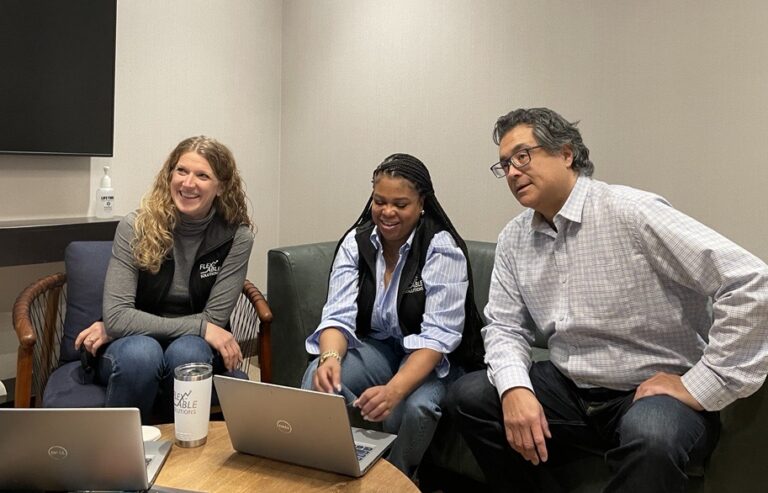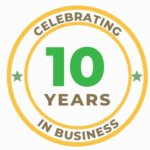Beyond the Watercooler: Strengthening Workplace Relations
A Q&A Guide For Your Company
Welcome to our comprehensive guide on effective employee relations! This blog is the first installment of our six-part HR Series. This series is designed for companies looking to enhance their HR services and overall company morale.
Let’s dive into the burning questions that companies often ask when it comes to managing the tricky topic of employee relations.
The Basics: What are the Key Components of Effective Employee Relations?
Effective employee relations are crucial for creating a positive work environment and fostering a culture of trust and collaboration. It goes beyond morale and impacts a company’s overall bottom line. Let’s start by going over the basics of successful employee relations:
1. Open Communication Channels
Ensuring regular, transparent communication through meetings and digital platforms is crucial. Open channels allow for the seamless flow of information, feedback, and ideas between employees and management. This transparency helps in building trust, clarifying expectations, and ensuring that everyone is aligned with the company’s goals and values.
2. Employee Engagement
Creating an environment that values feedback and recognizes contributions is essential for employee engagement. Engaged employees are more productive, have higher job satisfaction, and are more likely to contribute to positive business outcomes.
3. Conflict Resolution
Developing fair and lawful procedures for conflict resolution is critical to maintaining a healthy workplace. Effective conflict resolution practices ensure that disputes are handled constructively and that all parties feel heard and respected. This involves establishing clear guidelines for reporting and resolving conflicts, training managers and HR personnel in mediation skills, and fostering a culture where constructive feedback and open discussions are encouraged.

4. Training and Development
Offering continuous learning opportunities supports employee growth and job satisfaction. When employees have access to training and development resources, they can improve their skills and advance their careers, which contributes to higher engagement and retention rates.
5. Work-Life Balance
Supporting flexible working arrangements for a better work-life balance is increasingly important in today’s fast-paced work environment. By acknowledging the diverse needs of employees and offering flexible solutions, companies can reduce stress, increase job satisfaction, and improve overall employee well-being.
Now, let’s dive into executing these key components:
How Can We Successfully Handle Conflicts Between Employees?
Executing successful conflict resolution can feel daunting, but we’re here to help. Follow these steps:
- Immediate Acknowledgment: Promptly addressing conflicts as soon as they arise is vital in preventing them from escalating. Early intervention signals to all parties involved that their concerns are taken seriously, and it sets the stage for a constructive dialogue. Establishing protocols for immediate response ensures that conflicts don’t simmer beneath the surface, leading to more significant issues down the line.
- Neutral Ground: Establishing a safe and neutral space for discussions is essential for an open and honest dialogue. This environment allows all parties to express their viewpoints without fear of bias, retaliation, or judgment. Whether it’s a physical location or a virtual meeting space, neutral ground helps to level the playing field and can facilitate a more amicable resolution.
- Active Listening: Ensuring that each party feels heard and understood is a cornerstone of effective conflict resolution. Active listening involves more than just hearing the words spoken—it requires empathy, patience, and the ability to understand the emotions and intentions behind the words. By summarizing what has been said and asking clarifying questions, mediators can demonstrate comprehension and respect for each perspective, paving the way for mutual understanding.
- Identify Solutions: Collaboratively working towards a solution that is acceptable to all parties is the goal of any conflict resolution process. This step often involves creative problem-solving and negotiation skills, aiming to find a win-win situation where possible. Encouraging open discussion about possible solutions and compromises allows each party to have a stake in the resolution, increasing the likelihood of a lasting agreement.
- Follow-Up: Ensuring that the conflict is resolved in the long term requires follow-up after the initial resolution. This might involve checking in with the parties involved to ensure that the agreed-upon solutions are being implemented and are effective. It also provides an opportunity to address any lingering issues or adjustments to the resolution. Follow-up actions underscore the organization’s commitment to maintaining a harmonious work environment and can prevent similar conflicts from arising in the future.
- Ensure Legal Compliance: In managing employee conflicts, it’s crucial to comply with key employment laws such as the Equal Employment Opportunity (EEO) laws, the Americans with Disabilities Act (ADA), and the Family and Medical Leave Act (FMLA). Adopt clear policies that align with these regulations to uphold a fair and lawful resolution process, and keep detailed records to demonstrate compliance. This approach safeguards your company and promotes a culture of integrity and respect.
Learn more about how to successfully navigate workplace conflicts.
How Can We Improve Employee Engagement at Our Company?
Improving engagement requires:
- Empowerment: Give employees control over their work.
- Recognition: Acknowledge achievements regularly.
- Communication: Keep everyone informed about company matters.
- Professional Development: Invest in employee growth.
- Feedback Culture: Encourage and act upon feedback.
Struggling to improve employee engagement at work? Reach out to Flex for more tips.
What Strategies Can We Use to Retain Top Talent?
Top talent can be tough to find—Here are a few ways to make sure it stays at your company:
- Competitive Compensation: Offering attractive salaries and benefits is fundamental to retaining employees. Compensation should not only match the industry standards but also reflect the value that the employees bring to the company. This includes base salary, bonuses, health benefits, retirement plans, and other perks that contribute to the overall compensation package. Regularly reviewing and adjusting compensation packages ensures they remain competitive and meet the evolving needs of the workforce.
- Career Pathing: Providing clear advancement opportunities is crucial for employee retention. Employees need to see a future within the organization where they can grow and develop their careers. This involves defining clear career paths, offering mentorship programs, and providing training and development opportunities that align with their career goals. By actively investing in employees’ professional growth, companies can motivate them to stay and contribute to the organization’s success over the long term.
- Work Environment: Fostering a positive and inclusive culture is key to creating a workplace where employees feel valued and supported. This includes promoting diversity, equity, and inclusion, ensuring a safe and healthy work environment, and encouraging collaboration and innovation.
- Flexibility: Adapting to the needs of your workforce by offering flexible working arrangements can significantly impact retention. This may include remote work options, flexible schedules, part-time opportunities, or compressed workweeks. Flexibility helps employees balance their work and personal lives, leading to higher job satisfaction and reduced turnover.
- Engagement: Maintaining regular communication and team-building activities is essential for keeping employees engaged and connected to the organization. Engagement strategies can include regular check-ins, feedback sessions, employee recognition programs, and social events that build a sense of community within the company.

How Can Employee Feedback Be Integrated Into the Decision-Making Process?
Making a conscious effort to include the thoughts and opinions of your employees is a great way to show how much you value them. Integrate feedback through:
- Regular Surveys: Collect insights on various aspects.
- Suggestion Box: Encourage anonymous submissions.
- Feedback Meetings: Discuss feedback directly with management.
- Cross-Functional Teams: Include diverse perspectives in projects.
- Action Plans: Develop and communicate follow-up actions.
Looking for more ways to utilize employee feedback? Contact our team of experts.
What Strategies Can Be Used to Manage Remote or Hybrid Workforce Relations?
The workplace has changed substantially over the last four years. Many companies have taken on a remote or hybrid policy. Effective remote and hybrid management includes:
- Regular Check-Ins: Discuss progress and well-being.
- Virtual Team Building: Foster connections through online activities.
- Setting Clear Expectations: Clarify work and communication standards.
- Providing Technology Support: Equip teams with necessary tools.
- Adapting Policies: Address unique challenges of remote work.
Creating a Workplace Where Everyone Feels Valued and Motivated

Crafting a workplace that’s both enjoyable and efficient is no small feat. It’s about blending open communication with a knack for recognizing the unique talents each team member brings to the table. There’s a whole toolbox of strategies out there to ensure your employees aren’t just satisfied but truly engaged and thriving. In search of some expert guidance on HR and employee relations? Flex is just a message away. Let’s chat about how we can make your workplace not just function smoothly, but sparkle with positivity and productivity.

